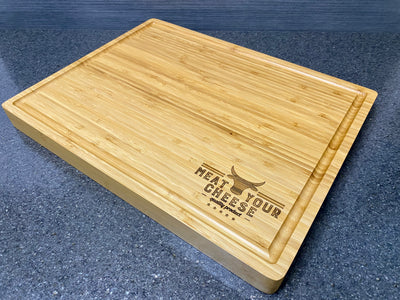What is Wagyu Beef?

You may be wondering, “What is Wagyu beef, and how is it relevant to me?”
The term originates from the Japanese words “Wa,” meaning Japan, and “Gyu,” meaning cow. So the literal translation is “Japanese Cow.”
You’re probably still wondering how this is of any relevance to you.
Wagyu meat is highly sought after due to its rich flavor and tender meat. In fact, A5 Wagyu—the highest possible grade given only to the finest beef—can easily be sold for $200 per pound.

What Makes Wagyu So Special?
It can be summarized in one word: fat.
Beef gets its flavor and texture from its fat content. While regular beef tends to have less fatty tissue, Wagyu beef contains a copious amount of monounsaturated fat, resulting in meat so tender and buttery it feels like it’s melting in your mouth. Wagyu meat is so rich, fatty, and full of flavor that it’s often served in smaller portions than regular beef. It’s also so much more expensive.
The History of Wagyu Beef
So how did it all start?
Wagyu refers to four different breeds of Japanese cattle—Japanese Brown, Japanese Black, Japanese Polled, and Japanese Shorthorn. These cattle were initially bred for their physical endurance. Due to the high marbling—caused by a combination of fat and muscle—in their flesh, they were sought after and used for physical work. Their fat provided them with a good source of energy, leading to better endurance and strength.
Eventually, people realized the high marbling actually made for delicious and tender meat, and Wagyu started being bred for consumption.

The Wagyu Lifestyle
To hone this exceptional, high-quality meat, Japanese farmers resorted to very particular methods of cattle rearing.
Many Wagyu cattle start their lives on a breeding farm. When they’re around ten months old, they’re sold to a farmer with an accompanying birth certificate legitimizing their bloodline. From there, they’re taken to fattening farms, given names, and raised for two to three years—until they’ve gained at least 50% fat. These farms are usually found in southeast Japan, which provides the perfect environment for cattle rearing.
Wagyu cattle are fed differently from other cows. Their diet typically consists of high-energy ingredients like wheat, hay, rice, soybeans, tofu, and mineral water. Some farmers even feed them special ingredients like olives to infuse their meat with more flavor. Of course, their feed is 100% organic and doesn’t contain any hormones or steroids.
The cattle are allowed to roam and graze freely in stress-free environments. Keeping the cattle calm and happy is an essential aspect of the grooming process since stress releases adrenaline, which causes tensed muscles and tough meat.
Many farmers take great pride in the humane way in which they raise their Wagyu cattle.

Do Other Countries Raise Wagyu Cattle Too?
While Japan started and currently leads the Wagyu game, two other countries—Australia and America—are significant contenders. While all three countries share similarities in how they rear their Wagyu cattle, there are still many differences, especially between Australia and Japan.
A key difference between the two Wagyu can be found in their bloodline. Though most of Australia’s cattle’s bloodlines originate from Japan, they are fed, bred, and grown in Australia. This means they’re often crossbred with other breeds, making them crossbreeds or purebreds. Meanwhile, in Japan, their Wagyu cattle are 100% full blood.
Japanese cattle are fed more than their Australian counterparts and are therefore much bigger. Since the Australian and Japanese Wagyu are raised in different environments, it leads to differences in the texture of their meat. Though both cattle have high levels of marbling, the Japanese Wagyu wins out in the end.
What Is Beef Marbling Score (BMS)?
How do we distinguish good quality Wagyu beef from poor quality? Three predominant systems used to grade wagyu beef are the American, Australian, and Japanese—all based on quality and yield. The United States Department of Agriculture (USDA) separates the meat into 8 different grades, where 1 is the lowest and 8 is the highest.
The Japanese Meat Grading Association (JMGA) and AUS-MEAT also have a very similar beef grading system. The quality grade ranges from 1 to 5, while the yield grade (responsible for assessing the cutability of the meat) ranges from A to C. But this is where the similarities end. With the JMGA, the BMS (Beef Marbling Score), which determines the quality grade, ranges from 1 to 12. Whereas, with AUS-MEAT, the BMS ranges from 1 to 9.
According to AUS-MEAT and JMGA, A5 is the highest grade Wagyu beef can achieve.

The Different Cuts of Beef
The different cuts of beef are sourced from nine primary parts of the cattle.
The first is the chuck with cuts that include flat iron steak and blade roast. It’s often pretty affordable and is used for ground beef. The second is the rib—an area with a lot of marbling, making for tender meat that’s full of flavor. The cuts include Wagyu Ribeye Steak, cowboy steak, and back ribs. Famous steaks like T-bone, Wagyu Filet Steak, and striploin are sourced from the short loin, while cuts like sirloin steak come from the—you guessed it!—sirloin and tend to be chewy.
Round cuts, including rump roast and tip steak, come from the rear part of the cattle and tend to have less marbling. They’re often used for Wagyu Hotdogs and Wagyu Burgers. The cattle’s lower chest yields brisket, which is a common cut. Skirt steak and short ribs are popular cuts from the plate—a fatty area high in cartilage. Flank steak is cut from the flank and is high in muscle fibers. Finally, we have the shank, also known as the cattle’s thigh. It’s often used to make beef stock.

At Meat Your Cheese, we’ve made it our mission to bring you the best possible experience. We aim to provide you with top-quality meats, no matter the occasion. Ultimately, in terms of taste, texture, and excellence, Wagyu is a culinary treat that’ll leave you with no regrets.




